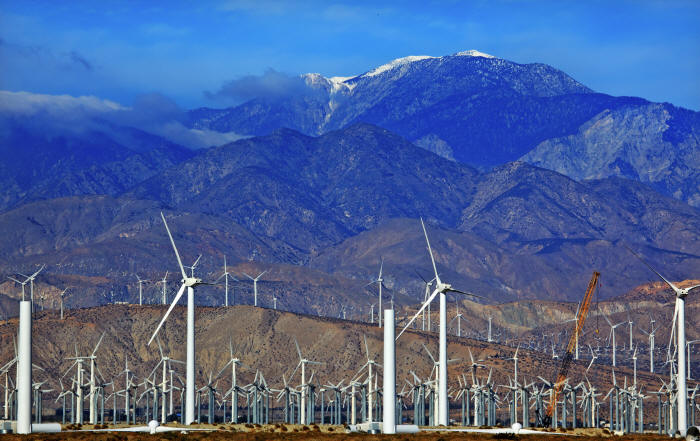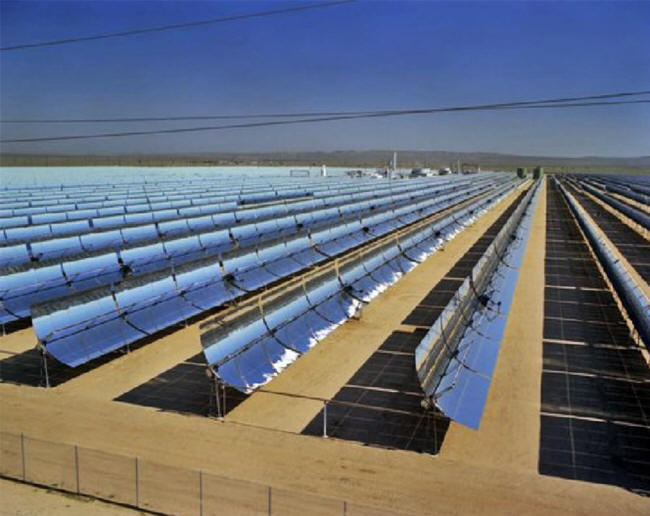|

by Vijay Jayaraj
July 21, 2025
from
CaliforniaGlobe Website
|
Vijay Jayaraj
is a Science and
Research Associate at the CO2 Coalition, Arlington,
Virginia. He holds a postgraduate degree in energy
management from Robert Gordon University and an M.S. in
environmental sciences from the University of East
Anglia, both in the U.K., and a B.S. in engineering from
Anna University, India. |

The
Dirty Truth
behind
'Zero-Carbon' wind and solar.
When Gavin Newsom claims
two-thirds
of California's electricity is
'zero-carbon,'
it's a
'master class in deception.'
When a Chinese solar panel
is
installed in a California desert,
it arrives
with a massive carbon debt...
Simple narratives are employed to seduce a populace, and none is
more seductive today than the promise of "carbon-free" energy.
In California, a state often touted as a green
pioneer, Gov.
Gavin Newsom celebrated an
"achievement" whose announcement was free of nuance and deficient of
truth.
"Two-thirds of California's power now comes
from renewable and zero-carbon electricity generation," he said
as if announcing an earthshaking milestone...
This declaration, however, was a master class in
deception...!
Newsom glosses over critical distinctions:
First, the term should be 'carbon
dioxide-free', not 'carbon-free' because the objective of the
climate-obsessed is 'eliminating' emissions of CO2
from human activity.
Carbon, which evokes images of black soot,
and
carbon dioxide (CO2), an invisible,
beneficial gas, are different molecules with
their own chemical properties.
And there is nothing "renewable"
about Earth's finite stores of metals, minerals and fuels necessary
for making "green" energy's equipment and infrastructure.
Also,
wind and
solar systems, the darlings of
California's energy policy, may not emit carbon dioxide while
generating electricity.
However, their production,
transportation, installation, maintenance and
disposal are energy-intensive and emit copious amounts of carbon
dioxide, as does virtually every other industrial enterprise.
Copper for wiring and electricity
transmission lines is mined and smelted using fossil fuels.
Transport and installation of these systems
require diesel-powered trucks and other heavy machinery.
Batteries used to back up intermittent wind
and solar systems require lithium, cobalt and nickel, all mined
with the support of internal combustion engines and often by
ethically questionable methods.
The steel of the modern wind turbine and of the massive pillars
supporting them are forged in coal-based blast furnaces.
The gigantic blades are made of fiberglass
and resins with heat and feedstock derived from petroleum.
Foundations for these behemoths require vast
quantities of cement whose manufacture releases significant
quantities of CO2.

Parabolic Plant Kramer Junction -
California 1994.
Solar
electricity production.
(Photo:
energy.ca.gov)
China produces over 80% of the world's polysilicon that make
up solar panels.
Polysilicon is often made
close to coal-fired power plants because the manufacturing
process requires so much energy.
So, when a Chinese solar panel is installed in a
California desert, it arrives with a massive carbon debt.
Solar panel users, in effect, export their
carbon emissions to China while patting themselves on the back
for their "green virtue"...
Although direct imports from China to U.S. have
been reduced to insignificant levels due to U.S. tariffs on Chinese
solar modules, Chinese-linked firms have simply moved their
operations to Southeast Asian countries like,
Malaysia, Vietnam, Thailand and Cambodia.
These nations - and more than 131 solar producers
there - now account for over 80% of all solar modules imported into
the U.S.
It is likely that four in five solar modules
installed in the U.S. come from Chinese-affiliated firms in
southeast Asia, which depend on carbon-intensive energy sources.
No honest engineer - or careful speaker - would call wind and solar
"carbon-free"...!
The cost of this green facade is a burden that
California's politicians refuse to acknowledge.
California consistently ranks among the top
five U.S. states for highest residential electricity prices.
As of 2025, the average Californian pays over
30 cents per kilowatt-hour - nearly double the national average.
Other areas served by grids with a
significant presence of wind and solar suffer from high prices
as well.
Claims that these "green" technologies are
"cheap" are supported by a pricing calculation that does not count
the costs of expensive backup power and the technical
complexities they introduce to power systems.
Consumers pay for the enormous costs of
subsidies, infrastructure upgrades, storage systems and alternative
generation for windless and sunless periods.
California also has been plagued by power outages and grid
emergencies, especially during periods of high demand.
Grid operators have had to issue repeated
alerts, entreating residents to reduce electricity consumption
to avoid rolling blackouts.
The state's so-called "green leadership" is
supported by the deceptive advertisement of "zero-carbon" and
false claims of low costs that ignore life-cycle
environmental effects and the billions of dollars paid to compensate
for the technical shortcomings of wind and solar.
Every steel beam, copper coil, and polysilicon wafer tell the real
story:
Fossil fuels are still the backbone of
modern electricity - even in so-called renewable systems
that cannot perform independently of them.
Announcements about "clean energy" are just
smoke and mirrors backlit by the glow of a coal-fired furnace in
Asia and paid for by overcharged consumers.
|



